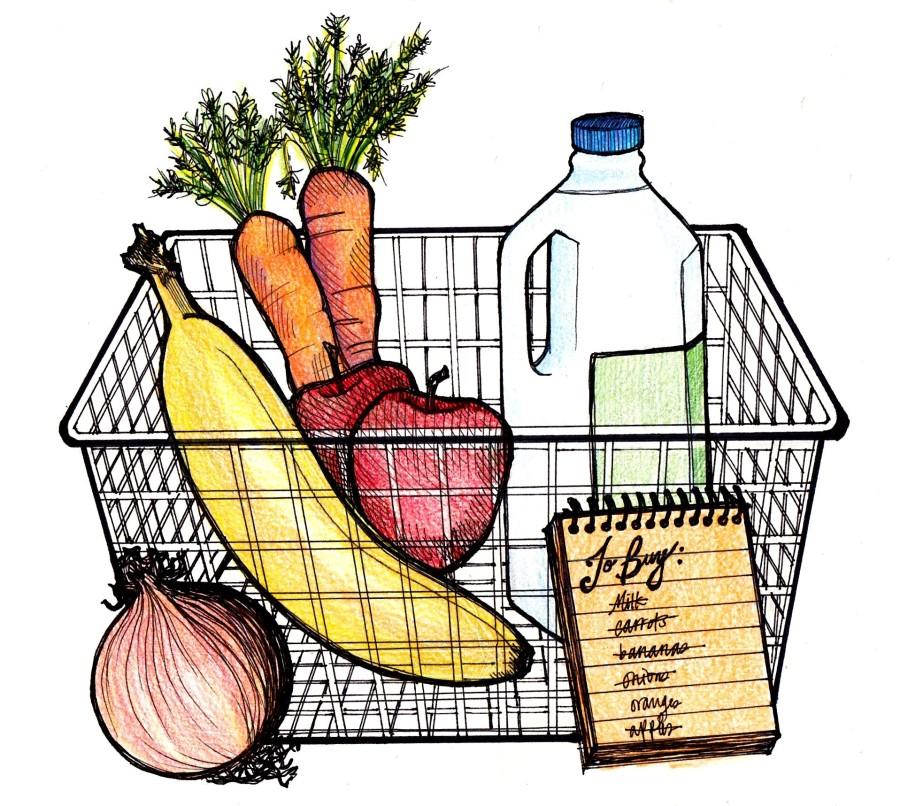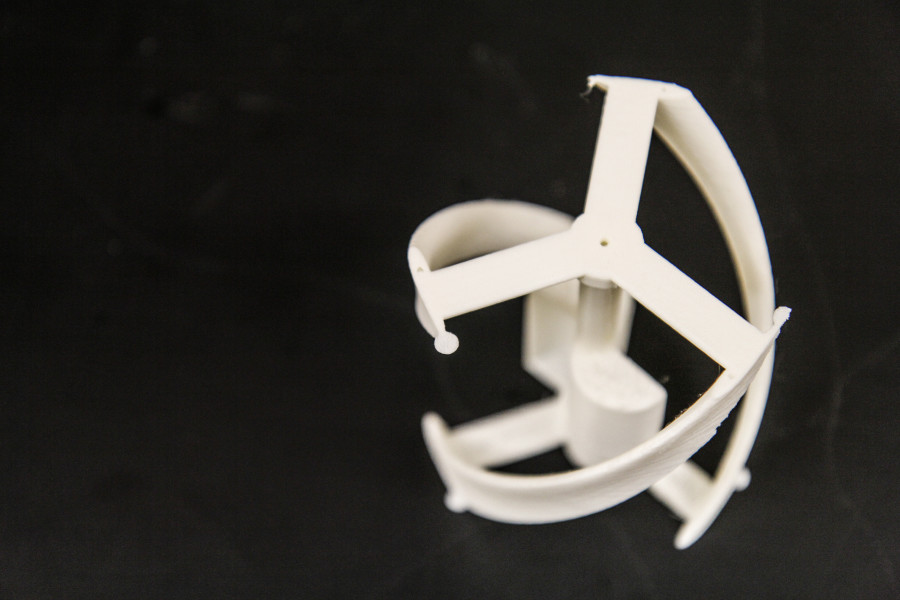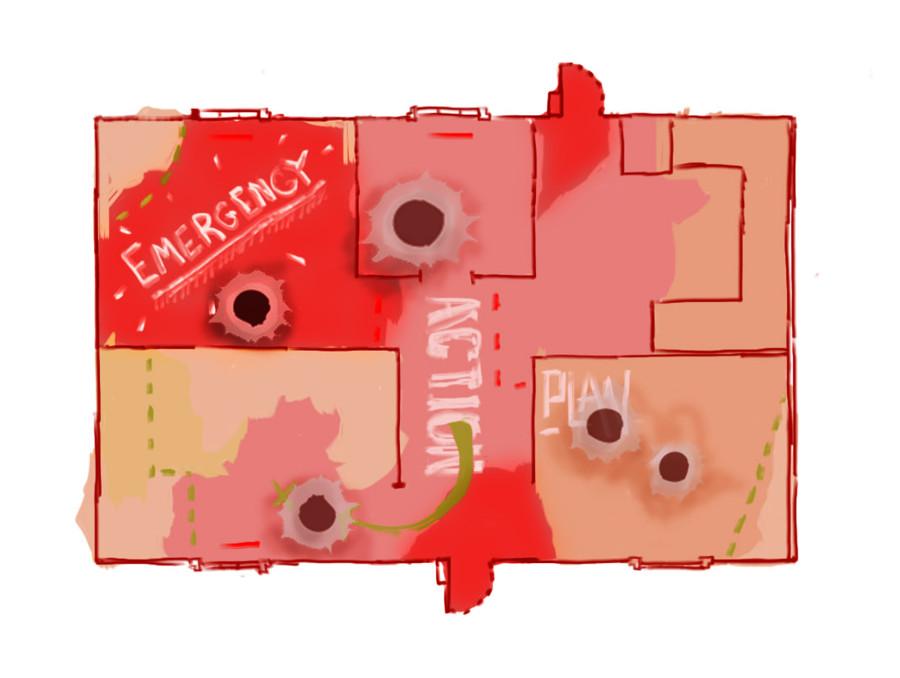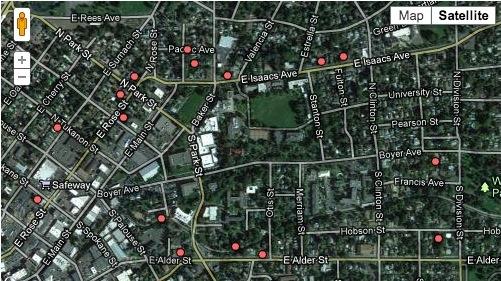As a growing wine tourism destination, Walla Walla is known for its many fine restaurants. That’s all well and good for when your parents are in town, but what about when you’re broke and need to find something tasty? Don’t worry––The Pioneer has you covered. Here are some tips for eating cheap in Walla Walla.
Grocery store overview
Walla Walla has a few major places to buy food, and sadly, they get better the further you get from campus. Super 1 Foods (710 S 9th Ave) is a good all-around store with a huge bulk section, plenty of natural and organic foods and relatively cheap produce. It’s probably your best bet for general shopping needs if you have access to a car. There’s also a Grocery Outlet on the same block (910 S 9th Ave), which is a good first stop where you can often find greatly discounted items. Produce and cheese are especially good bargains here.
Andy’s Market over in College Place (1117 S College Ave), like Super 1, has cheap produce, a great bulk selection and is well worth the trip if you need to buy spices (sold in bulk containers at a fraction the price for normal grocery stores). Andy’s is run by Seventh Day Adventists, which means that it’s closed on Saturdays, but also that they have a ton of awesome vegetarian options. The College Place Wal-Mart is another grocery option for those with vehicles.
While not technically a grocery store, the Walla Walla Farmer’s Market is a good option if you use it well. It takes place every Saturday and Sunday from 9 a.m. to 1 p.m. on 4th and Main, and runs May through October. Produce is sometimes cheaper here than in stores, because you’re buying directly from the farmer. If you stick to basics––onions, apples, spinach––and avoid higher-end veggies, you can save money while enjoying the ambiance.
Tips for grocery shopping, by food columnist Ellie Newell
So now you’re scoffing. “Grocery shopping? Seriously?” Here’s the secret: Grocery stores want you to spend money in them. They are designed so that you are attracted to the expensive foods with the pretty wrappers, not so that you can load up on bulk steel cut oats. So how do you navigate the thousands of options so that you come home with delicious healthy food and don’t break the bank in the process? Here are my tips:
Make a list and stick to it. Organize your list by section––produce, dry goods, dairy, etc.––so that it’s easy to move through the store efficiently. If you just walk all the aisles, scanning for items you might be out of, you’ll be more likely to load up on the four boxes of Chocolate Frosted Sugar Bombs that happen to be on sale this week.
In that same vein, processed foods are not only often full of fats, sugars, enough salt to cure an elk, and names that would stump the sharpest chem major, but they are often very expensive. Essentially you are paying someone to make your oatmeal for you, when you could make oatmeal from scratch and add a normal amount of brown sugar, raisins and diced apples, which would be less pricey, healthier and more delicious.
Navigating Safeway
The only real grocery store within walking distance of campus is Safeway (215 E Rose St). While often a bit pricier than other stores, Safeway is a good bet if you know how to shop (and often a necessity for last-minute items).One of our editors worked at the Walla Walla Safeway for two years and picked up a few tricks for saving money, so here are her tips:
- Get a Club Card––any cashier can give you one. It’s free, and you don’t have to provide any personal information. It’s the only way to get sale prices, and you’ll get coupons on stuff you buy the most.
- Check the sales fliers, available inside the store entrance (sales change every Wednesday; new ads are out on Tuesday). Grab any coupons for stuff you’re buying, and stock up on any deeply discounted items.
- Some items go on sale on a regular schedule, and some will periodically be deeply discounted if you buy a lot of them (usually 4+). Pay attention to these cycles––often every 3-4 weeks––and stock up when stuff is cheap.
- Be aware of price tag trickery, and read the fine print. Safeway often puts the shelf price as 2/$5.00 to get you to buy two of something, but each individual item is still only $2.50––you don’t need to buy the indicated number to get the sale price.
- Use manufacturer’s coupons. Grab a Sunday copy of the Walla Walla Union-Bulletin (you can pick one up for free in the Reid Campus Center basement near the Post Office). It’s full of ads which come with clip out coupons. It’s really easy to save on name-brand products this way, especially snack foods, personal care items and cleaning products.
- Unless it’s cheaper not to, buy generic brands. Safeway makes its own versions of just about everything, and they’re usually indistinguishable from the name brands (with some exceptions, like on snack foods).
Free food
It’s pretty easy to get free food on a college campus. If you’re on a meal plan, the dining halls will pretty much have you covered, but if you’re still in need of something to eat, here are some tips:
- Go to club meetings. Many clubs offer pizza at the beginning of the semester when they’re trying to lure new members in. Show up to something you’re interested in and have some dinner.
- Take advantage of meal plan benefits. Plans A and B come with ten guest swipes. If you’re on a plan, make sure you use them well. If you’re not, bum some free food off of your underclassmen friends. This goes for extra Flex dollars at the end of the semester as well.
- Hang out with people who live in Tamarac. Many of them are on Meal Plan T (available exclusively to Tamarac residents), which consists of $1100 Flex dollars––more than most people can spend.
- Read emails on the students listserv. The college hosts all kinds of events where food is present, including lunches with members of the administration and panel discussions.






